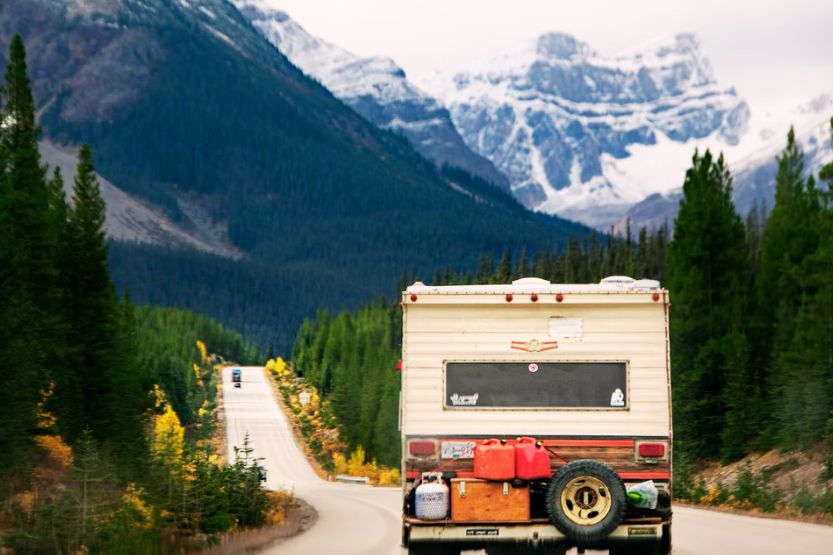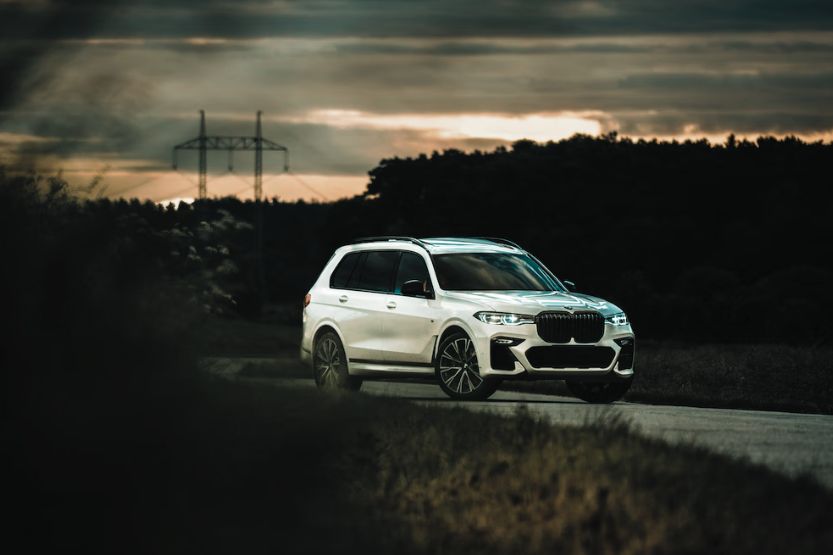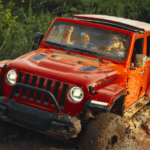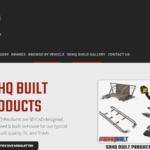Have you been wondering why there are warning signs on freeways and highways for high-profile vehicles? The warning is for these vehicles to watch out for strong winds. What is a high-profile vehicle?
High-profile vehicles refer to trucks, RVs, semi-trucks, pickup trucks, SUVs, box trucks, and other cars with sides of large surface areas. They don’t refer to flashy or expensive vehicles; instead, the term refers to the bigger surface areas of these vehicles.
They are categorized as high profile vehicles due to safety concerns while running on freeways and highways. Their larger surface areas present a greater challenge on such roadways because of their susceptibility to unexpected gusty winds.
Read on to learn more about high profile vehicles, what they are, their need for safety, and how to drive them safely.
What Is a High Profile Vehicle?

A high profile vehicle is one with a large surface area. Some examples of this type of vehicle are trucks, RVs, SUVs, pickup trucks, box trucks, and other bigger vehicles. They are not expensive, flashy cars such as Bugatti Chirons, Ferraris, Audi S7s, and similarly priced cars and vehicles.
The “high-profile” terms do not refer to the high price of these vehicles but their larger girth or bigger surface areas. They are referred to as high profile vehicles because of safety concerns.
Due to their larger surfaces, these vehicles are more susceptible to the sudden rise of gusty winds on highways and freeways.
The sudden occurrence of strong or cross winds will quickly make them easily tumble and overturn while running even at normal speeds.
When running on the highway, their bigger surface areas will present a strong resistance to crosswinds that will turn them over, or they can spin dangerously and cause terrible accidents.
What Are the Examples of High Profile Vehicles?
Bigger vehicles have the right to run on roads, highways, and freeways. You always run across them as you drive your car, especially on your trip to a remote location. Most probably, you are not aware of their safety concerns.
Here are some examples of high profile vehicles so you’ll be more careful the next time you run across them on the road:
1. RVs and Motorhomes
Recreational Vehicles and motorhomes have larger girth because of their nature. They have more content in their cabins. With more things inside them, they require larger bodies. And with bigger bodies, naturally, their surface areas will also be bigger.
As a vehicle with a large body, an RV is more susceptible to tumbling over if suddenly hit by strong crosswinds on the highway.
Even if the RV has stabilizers to keep it steady, it will still topple down when a strong crosswind hits it if it runs even at normal highway speeds. The stabilizers are only suitable when the RV is parked and motionless.
The bigger the truck, the higher its chances of being knocked over while running on highways and freeways. So, if you are driving a high profile vehicle on the road, you need to reduce your speed to minimize your chances of being knocked over.
Your vehicle has a low center of gravity. If a sudden strong crosswind hits it, it can easily topple down. Individual states enact varying laws in the US on whether high profile vehicles can travel when the weather is terrible. Some states ban these vehicles during the presence of strong winds.
2. Box Trucks, Commercial Trucks, and Trailers
The best example of high profile vehicles is commercial and box trucks. These trucks have surfaces that are narrow, tall, and bulky. Although they come in different sizes, one word can categorize them all – big. Their surface areas are vast.
They are the most susceptible to strong crosswinds. Some will topple over when hit by strong gusty winds—box trucks, such as commercial trailers, tow containers 9 feet high and 50 feet long.
The surface area of such a truck size is around 450 square feet which are large enough for a strong crosswind to knock over.
3. SUVs and Pickup Trucks
More people are choosing SUVs, AUVs, and pickups to get them from point A to point B, not just on highways but on busy city streets. So, that increases the danger of accidents due to toppling over these big trucks.
It is not that they are overly bulky and relatively taller, but their bigger surface areas and their elevated height also qualify them as high profile vehicles. Their centers of gravity are higher than standard sedans and compact cars. So they are also susceptible to toppling over.
While they may not be as tall and bulky as box trucks, they also haul around bigger surface areas. If they come across strong crosswinds, their chances of being knocked over are greater than sedans.
Why Is It Important to Warn Drivers of High Profile Vehicles?

They must be labeled as high profile vehicles so that every driver who encounters them on the road will be warned. In that connection, if you drive any private or passenger car on highways and freeways, you need to be aware of them – for your safety.
By being aware of their inherent risk, you will be careful whenever you drive along high profile vehicles on the road – especially when the weather is inclement. To state the obvious, you should avoid driving beside these vehicles on streets, roads, and highways.
The primary reason they are tagged this way is to make people aware, especially the ordinary drivers who drive their vehicles on the streets and roads. They need to pay attention to high profile vehicles running alongside their cars.
Ordinary drivers should be aware of their potential to cause accidents on the road during inclement weather. Being aware of them reduces the risks of being involved with them in preventable accidents.
How Dangerous Are High Profile Vehicles?
High profile vehicles have greater chances of toppling over because of their higher center of gravity. A way to minimize the risks is to get a high-profile car with a rollover hazard.
So, if you are buying an SUV or a pickup truck, look at its manual and check if it comes with this feature.
These vehicles are susceptible to strong winds whenever they are executing a turn. Their high center of gravity will be prone to turning over when they make a sharp turn as strong winds are hitting the vehicle.
So, if you are driving such a vehicle, your turns should be done slowly, especially if they are sharp. It could knock over easily without a vehicle stabilizer. Due to their susceptibility to strong winds, these vehicles should carry the proper insurance that covers this risk.
Again, what is a high profile vehicle? High-profile vehicles include pickup trucks, semi-trucks, RVs, and cars with high surface area.
What Should Drivers of High Profile Vehicles Need to Watch Out for?
Now that you know the risks inherent in driving a high profile vehicle, what do you need to watch out for?
Observe for Crosswind on the Road
If you are driving down an interstate, and your speed is around 65 to 70 miles per hour, you should observe if there is a crosswind on the road you are about to traverse. If you notice crosswinds ahead, slow down and drive more carefully.
Be ready to step on the brake when the wind is getting heavy. And don’t make a fast, sharp turn. Slow it down, and you’ll be able to get over the crosswind without experiencing any trouble.
Strong winds can come suddenly and anywhere. If you are not observing the road conditions, you will be surprised when they hit you. You’ll not be able to control your vehicle and boom fully! You are already in a vehicle accident.
Strong winds are defined as gusts of air over 30 mph (above 50 kilometers per hour). The Beaufort Wind Force Scale ranks them as seven on the scale.
Dangers of Driving in the Presence of Strong Winds
On the highway, some of the dangers posed by strong winds are the following:
- Strong winds can kick up dirt and dust. This situation will lower the visibility of the road ahead. It will also increase the chances of road debris hitting your windshield and windows.
- High winds can blow all sorts of debris onto highways. They could be small pieces of gravel, tree branches, loose man-made objects, and tarps. While they are harmless by themselves, if they are scattered on the road, and you run over them at fast speeds, it can spell danger.
- Strong winds accompanied by rain are even more dangerous. A high profile vehicle will quickly lose control while traveling in this road condition, even at normal speeds.
Safety Tips When Driving a High Profile Vehicle

Being safety conscious can be excellent when driving a high profile vehicle. Here are some tips that you need to follow when you are behind the wheel of such a vehicle:
1. Consult Weather Reports
Consult weather reports before sitting behind the wheel of a high profile vehicle. The U.S. National Weather Service announces a High Wind Watch if they expect strong winds in the next 12 hours or if sustained winds are 40 mph or more.
2. Steer in the Opposite Direction When Driving in a Side Wind
If you drive in a side wind, steer in the opposite direction. But be slow in turning the steering wheel. Sudden turns may cause your wheels to spin.
3. Observe Basic Safety Driving
Hold the steering wheel with both hands firmly in the nine and 3-o ‘clock positions. But if the diameter of your steering wheel is big, and there is no airbag in your vehicle, your steering hand should be in the 10 and 2 o ‘clock position.
4. Watch Out for Other High Profile Vehicles on the Road
Watch out for other high profile vehicles on the road, especially towing cargoes such as 18-wheeler trailers. Their cargoes or containers can be knocked off if there are sudden gusty winds on the road you are traveling on. That would really be dangerous.
5. Drive Below the Speed Limit During an Inclement Weather
Drive below the speed limit if there is inclement weather. It’s much safer to stay near the minimum speed or even lower because anything can happen. You will increase your ability to control your vehicle if you do this.
6. Slow Down
Slow down so you can avoid stepping on your brakes. While head and tailwinds are less likely to knock you over, they can push your vehicle. So put your car in low gears.
In this manner, you won’t have to step on your brakes to avoid hitting an object or another car. You may spin if you suddenly step on your brakes.
7. Activate the Headlights
Turn your headlights on if strong winds are kicking the dust. You also need to slow down when you hit this road condition.
In Closing
High profile vehicles are those which have large surface areas. These vehicles refer to trucks, RVs, semi-trucks, pickup trucks, and other bigger vehicles. They don’t refer to Bugatti Chirons, Ferraris, Audi S7s, or different costly and flashy types of automobiles.
One primary reason why they are called high profile vehicles is because of safety concerns. They are susceptible to sudden gusty winds while running on highways and freeways. The bigger surface areas of these vehicles will easily overturn them and cause terrible accidents.

![High Build Primer [When to Use and Best Automotive High Build Primers] high build primer](https://roadsumo.com/wp-content/uploads/2021/06/High-Build-primer-150x150.jpg)


![Ford Vehicle Order Tracker [How to Track Your Order] Ford Vehicle Order Tracker](https://roadsumo.com/wp-content/uploads/2022/05/Ford-vehicle-order-tracker-150x150.jpg)
![Stop Vehicle Leave Engine Running [Causes for This Mercedes Warning Light] stop vehicle leave engine running](https://roadsumo.com/wp-content/uploads/2022/04/stop-vehicle-leave-engine-running-150x150.jpg)



